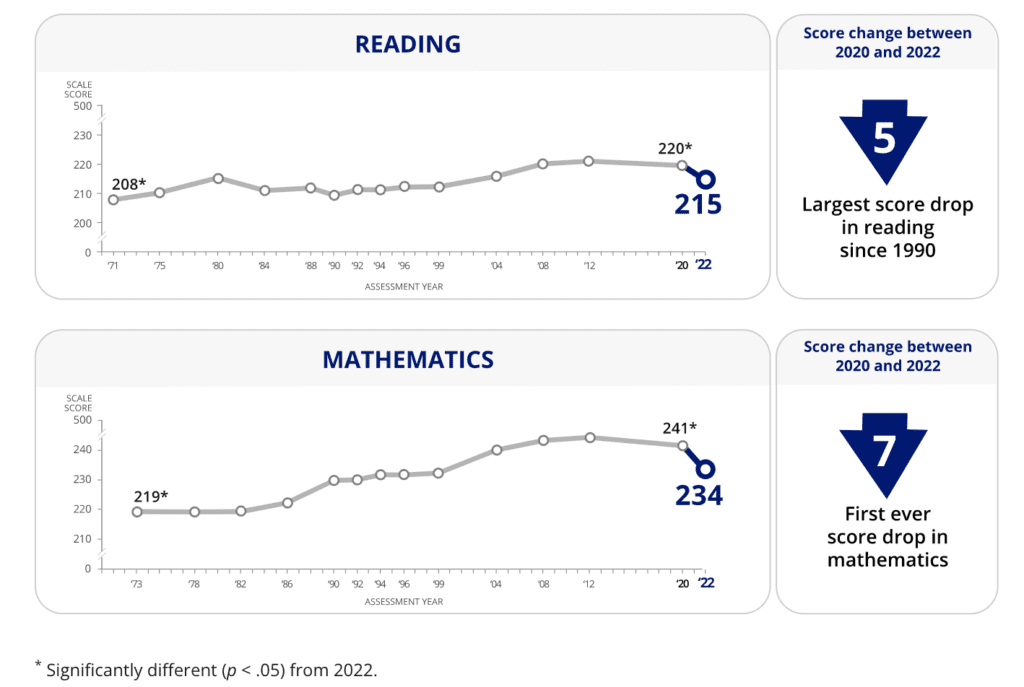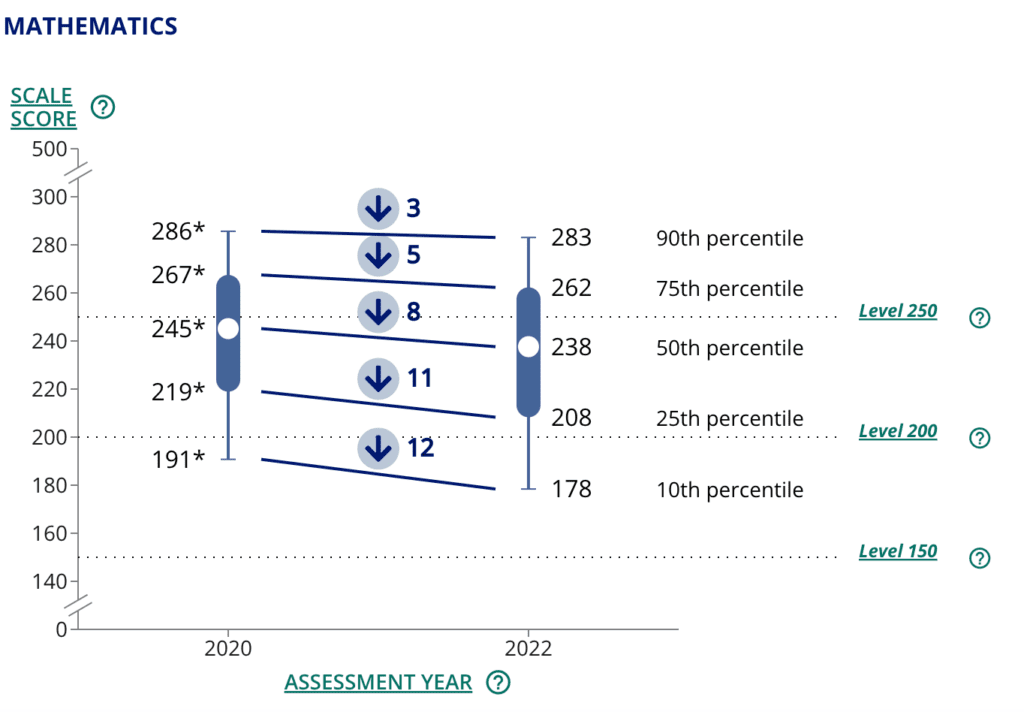Share this story
- National test scores released Sept. 1 show an average decline of 5 points in reading and 7 points in math for age 9 students compared to 2020.
- This is the largest decline in reading scores since 1990 and the first ever decline in math scores on the National Assessment of Educational Progress long-term trend reading and mathematics assessments for age 9 students.
|
|
National test scores released Sept. 1 show an average decline of 5 points in reading and 7 points in math for 9-year-old students compared to 2020.
This is the largest decline in reading scores since 1990 and the first ever decline in math scores on the National Assessment of Educational Progress (NAEP) long-term trend reading and mathematics assessments for 9-year-old students.


In addition to average scores, NAEP reports scores for students at five percentiles: 10th percentile, 25th percentile, 50th percentile, 75th percentile, and 90th percentile. In 2022, lower-performing students experienced larger declines in math and reading than higher-performing students compared to 2020.
In reading, scores for students at the 90th percentile declined two points from 2020 to 2022, whereas scores for students at the 10th percentile declined 10 points during the same time period. In math, scores for students at the 90th percentile declined three points, whereas scores for students at the 10th percentile declined 12 points.


When looking at scores broken out by race and ethnicity, white, Black, and Hispanic students experienced the same six point decline in reading scores from 2020 to 2022. However, math scores for Black students declined 13 points compared to eight points for Hispanic students and five points for white students.
“It’s clear that COVID-19 shocked American education and stunned the academic growth of this age group of students,” said Peggy Carr, commissioner of the National Center for Education Statistics. “We don’t make this statement lightly.”
The NAEP long-term trend math and reading assessments have been administered to three age groups (9-, 13-, and 17-year-old students) since the 1970s. This report compares scores for age 9-year-old students who took the long-term trend assessments in the winter of 2020 and the winter of 2022.
Prior to 2022, NAEP long-term trend math and reading scores had been stagnating for several years. And despite the large drops, average scores are still higher than they were when the tests were first administered.




